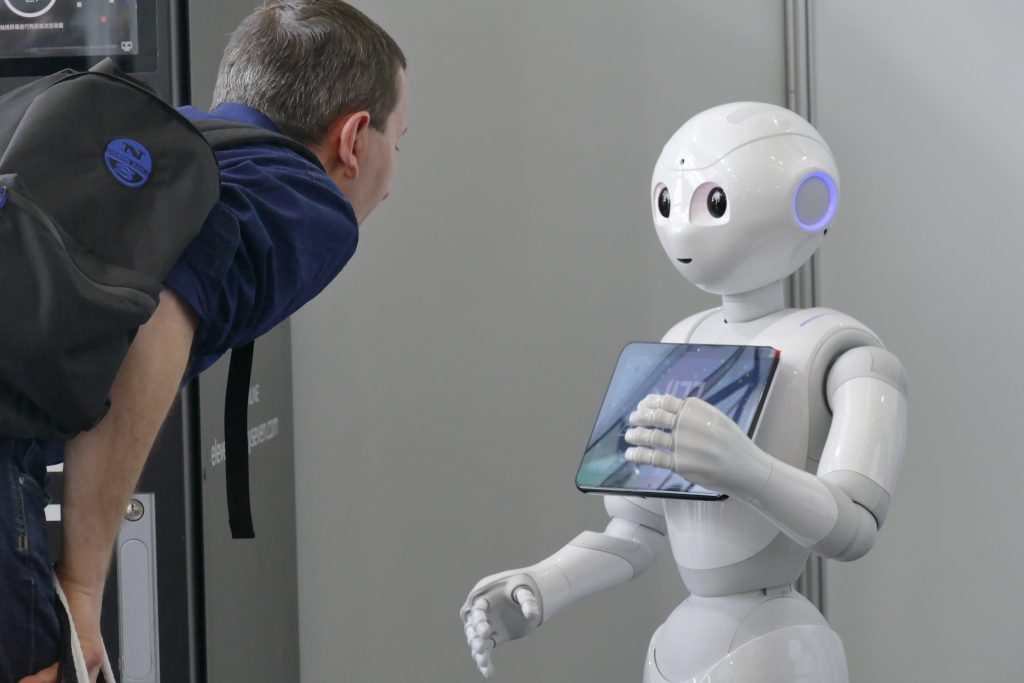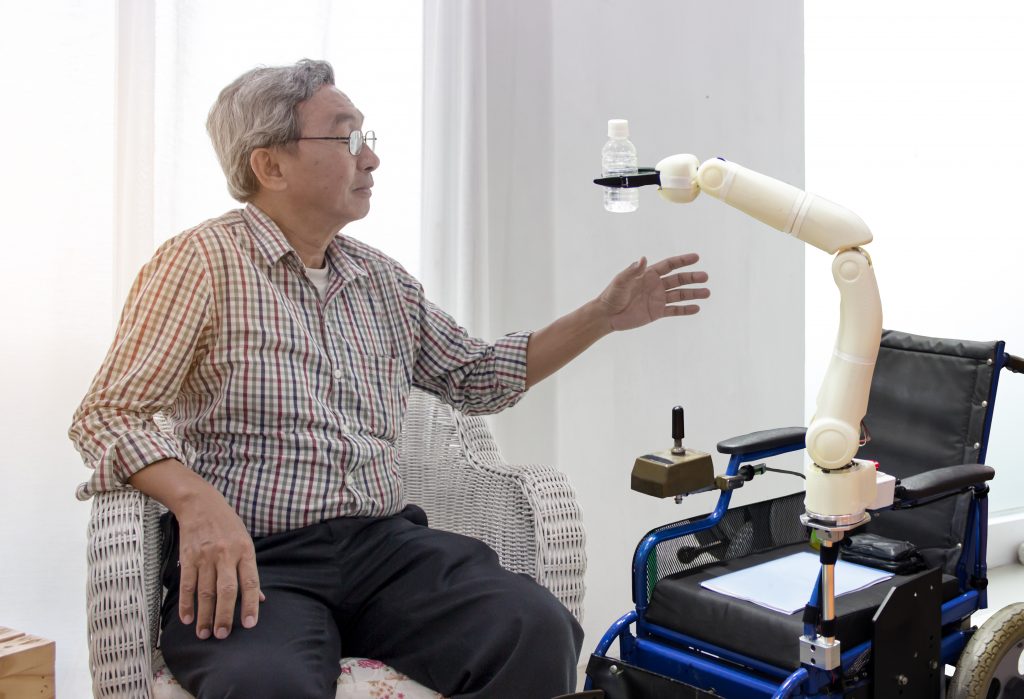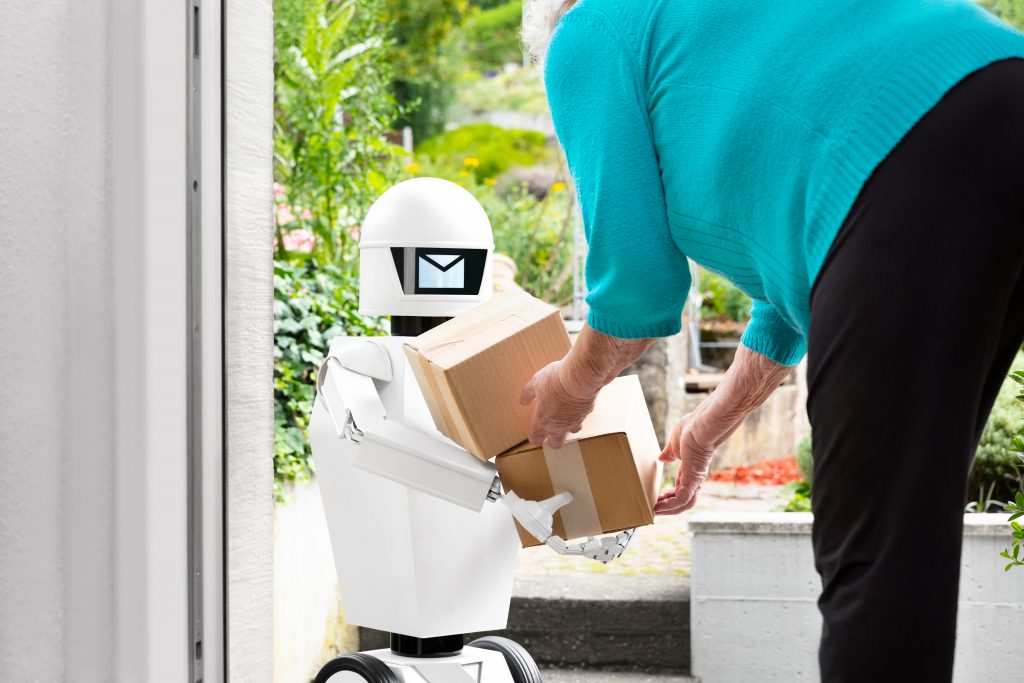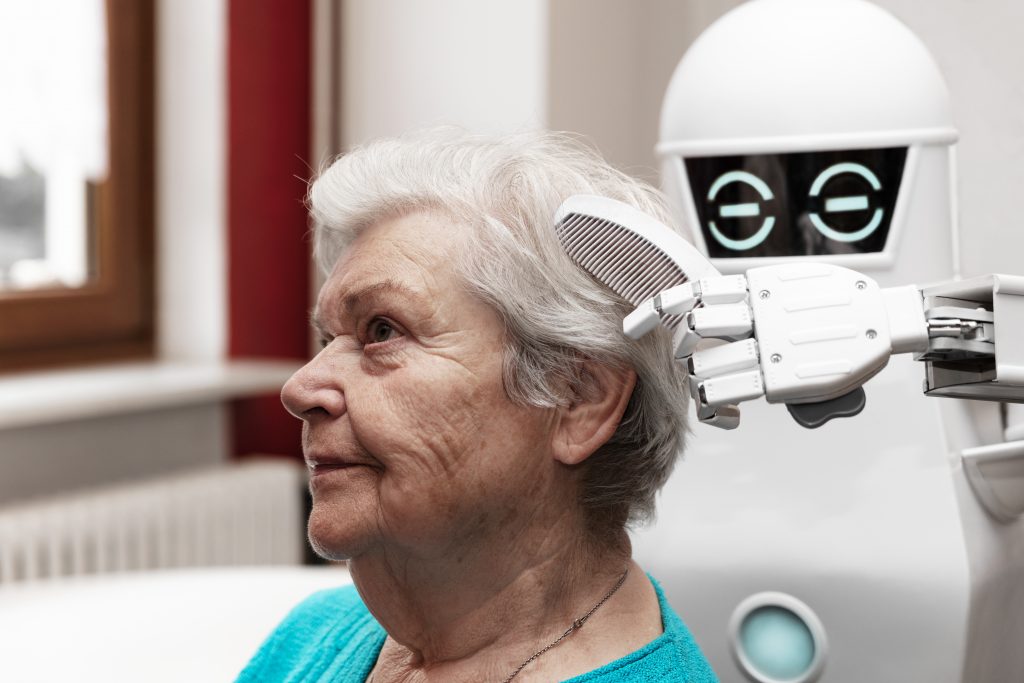There are two major, somewhat unrecognized problems happening in senior healthcare in the United States.
The first is the eldercare gap.
The population of individuals over the age of 60 is projected to double by 2050, resulting in nearly 2.1 billion people. In 2035, the Census Bureau predicts that for the first time ever, there will be more Americans over the age of 65 than under 18.
While seniors are living longer, the supply of family caregivers is unlikely to keep up with the demand of elders in need of care.
Family caregivers provide the majority of long-term care for seniors. The value of this “free” care provided is steadily increasing. In 2014, the estimated economic value of the services these caregivers offered was near $470 billion.
This number exceeded the value of paid home care (like that of assisted living communities) and the total spending of Medicaid combined.
The caregiver support ratio is used to define the number of potential family caregivers for each older person. This estimates the availability of family caregivers over the next few decades.
In 2010, the United State’s caregiver support ratio was more than 7 potential family caregivers for every person aged 80 or more. That ratio is projected to sharply decline to 4 to 1 by 2030.
The rising demand and shrinking availability of family caregivers call for new solutions to the delivery of eldercare.
Second, is the rising costs of paid home care.
Read More: 5 Trends in Assisted Living Communities to Watch Out For
Compounding the problem of the eldercare gap is the costs of eldercare. The main reason family caregivers are forced into caring for their loved ones instead of hiring a medical professional, is due to costs.
These expenses vary from state to state, but the national average for keeping your loved one in a Nursing Home Facility is over $93,000 per year! That number increases to $105,000 your loved one wants a private room.
And although there are government programs like Medicare and Medicaid that can help cover these costs, they offer strict requirements and low payouts. This results in the majority of people not qualifying for the financial assistance they need.
These problems have lead researchers worldwide to proactively working continuously on a solution, and they might’ve found one. Eldercare robots.

What are Elder Care Robots?
Eldercare robots are any robots created to care for the elderly by performing the tasks of caregivers. This could be through companionship, round-the-clock temperature monitoring, fall detection, and more.
This idea has been around for years, but the relevancy is just now increasing rapidly.
New generations of robots are able to do far more than in the past. Other than simple, manual tasks, artificial intelligence is allowing them to perform intellectual engagement with people. This is making them great companions for seniors.
From ai-powered pets to robotic beds, these companions have been shown to help relieve some of the stress of caregiving while continuing to provide top-quality care to seniors.
Although there are potential benefits, there are a lot of unknowns that still need to be answered. Concerns about the ethics, effectiveness, and expenses of these robots have been raised by multiple professionals in the field.
So, will we actually see elder care robots widespread in the future?
Does our future depend on elder care robots?
To answer this, we first need to look at where the industry is currently. What challenges are robotics companies facing? Are Americans ready for robots to care for them? How long until robots are able to automate caregiving tasks?
Right now, the eldercare robotics industry is just starting. Most Americans aren’t even unaware of these efforts to develop robot caregivers. In fact, only 6% of people say they have heard of these efforts, while 65% say they have never heard of eldercare robotics.
Because these companies are just starting, they aren’t able to create a well-rounded robot that can take on all of the tasks of a caregiver.
For instance, companies like Jibo are working on a social robot that offers a friendly companion for seniors. Although this companion robot is great for social interaction, it lacks the mechanical parts to provide any medical care.
Another company, Waypoint Robotics, is focusing on the mobility part of autonomous robotics but not so much on the social aspect. They are creating mobile robots that zip around hospital hallways like automated room service carts.
As these companies grow and the technology advances, eventually, they will have the ability to create a caregiving robot.
This growth has been slowed in the past due to the lack of funding and awareness. But now, as awareness is increasing, so is the funding.
Investing in the Advancements of Elder Care Robots
In the US, efforts to encourage research are taking place. The National Science Foundation currently invests in the development of service robots and the National Institute of Health has been known to provide funding as well.
In addition to government funding, venture capitalists are also looking to invest in this space. Jibo reportedly earned $23 million to help advance its robotic initiatives and iRobot has even started its own venture capital firm to further investments in robotics research.
The chief executive of iRobot, Colin Angle, said in an interview that venture capitalists are particularly interested in robotics manufacturers who are focusing on consumer needs and eldercare.
And in 2018, the global market for robots designed to assist the elderly was $48 million, which is more than double what it was in 2016.
This increased funding has led to increased growth in the industry and this is only looking to expand further in the future.
According to the International Federation of Robotics, medical robot sales increased 85% between 2017 and 2016. Furthermore, the Coronavirus pandemic has only accelerated these efforts.
In the Spring of last year, more than 1,100 seniors received robotic pets through the Association of Aging in New York and another 375 people received some through the Florida Department of Elder Affairs.
This shows that some long-term care communities aren’t afraid of implementing these autonomous companions into their facilities.
But are Americans ready for this major change? The data is mixed.
A survey found that 44% of Americans are somewhat enthusiastic about caregiving robots while 47% express some level of worry. Older adults express lower levels of enthusiasm compared to younger individuals.
And in another survey, 68% of people agreed robots are beneficial because they can help people, but only 26% said they’d be comfortable with a robot providing care to them.
So investors are interested in the industry and the general population has mixed feelings, what about professionals’ opinions?

The ethics of care in the future of robotics
Robots aren’t inherently good or bad, it just depends on how they are used. But what if seniors come to prefer robots over people?
Some philosophers and researchers have raised concerns about the risks of leaving caregiver duties to robots.
A robot will never forget a pill or doctor’s appointment, they will never abuse or defraud anyone, and they are never impatient or frustrated. However, if you think human-to-human interaction is a vital part of life, then the idea of people preferring robots over other people is problematic.
In their paper, “Granny and the Robots,” Amanda and Noel Sharkey raised the concern that although it may be convenient to have an automated robot spoon-feed an elderly person, this removes an opportunity for human interaction.
Philosophers against elder care robots say that a caregiver-centric perspective is problematic because it focuses on displacing the demanding tasks of eldercare for the caregiver but because of this, easily ignores the needs and rights of the elderly person.
Other ethicists, like Nancy Jecker at the University of Washington, argue for increased robot use in nursing homes and assisted living communities.
Robotic assistance doesn’t have to come at the cost of human interaction or the rights of the elderly person. Instead of replacing human caregivers, they say that elder care robots can simply integrate with caregivers.
Instead of a robot taking on all of the tasks of a caregiver, they simply assist the caregiver in doing their job better.
And for those seniors choosing to age in place instead of a community, contact with a robot is probably better than no contact at all.
Privacy Concerns
In addition to ethics, privacy concerns have been raised as well. Issues of consent, privacy, and surveillance are all significant problems. These robots have the ability to gather personal, medical, and behavioral data about your loved one and process, share, distribute, and sell this data to others.
As early as 2002, Japanese retirement homes have been using teddy bears to watch over their residents and alert staff whenever someone leaves their bed.
Nowadays, robots are able to monitor the temperature and other personal information of an individual. Some people have pointed out that these robotics companies can share, or sell, this data to others.
It’s safe to say that there are multiple risks of robots as social companions and elderly caregivers. These risks are not yet fully understood, but as the technology advances, so will the understanding of the effects of this technology.
How can robots help the elderly?
Eldercare robots are expected to provide various kinds of assistance to the elderly. This includes assistance with activities of daily living, cognitive support, relief for caregivers, collaboration with smart-home products, and social interaction.
These robots are designed to ensure the well-being of senior citizens. There are multiple types of eldercare robots, each with specific tasks that they assist with.
Types of elder care robots
Companion Robots
Companion robots are created for the purpose of creating realistic companionship for humans. These robots provide social interaction and assistance and can remind seniors of upcoming events, appointments, and deliveries.
Research suggests that there is a legitimate link between social interaction and cognitive impairment. An extensive social network has been shown to protect against dementia and Alzheimer’s disease.
These companion robots can come in a variety of forms, including:
- Pet Robots: These robots are disguised as a pet (commonly a dog or cat) and offer limited interaction with seniors. They have been proven to effectively reduce loneliness and depression for elderly people in care homes.
- Mobile Robotic Telepresence (MRT) systems are essentially just a video screen on wheels. These systems can be controlled remotely by simply using a smartphone app. The main purpose of this device is to allow seniors to do video calls with their families who are unable to visit in person.
- Doll-Like Therapy Robots comfort and calm seniors who may be agitated by the disorienting symptoms of dementia.
Medical Robots
Medical robots are more focused on the day-to-day health concerns of the aging population. These humanoid robots provide more complex and comprehensive care than companion robots. They come with state-of-the-art navigation systems and AI technology that allow them to complete advanced tasks, such as retrieving a pill bottle or checking a person’s vital signs.
The Care-O-Bot, for example, is a humanoid robot assistant that has been shown to reduce the amount of time it takes seniors with Alzheimer’s disease or dementia to complete common tasks.
For patients who are too frail and weak to walk on their own, there are also wearable exoskeletons like HAL from Japan that can help them move about more easily.

Benefits of Elder Care Robots
There are many potential benefits of elder care robots. As technology advances, there will only be more benefits offered in the future. Current possible advantages to owning an elder care robot include:
Combat Loneliness and Dementia
Loneliness is a problem for many adults. It can be bad for their health and make them more likely to get Alzheimer’s disease. A report from the National Academies of Science, Engineering, and Medicine (NASEM) says that more than one-third of people aged 45 or older feel lonely. And nearly one-fourth of people aged 65 or older are considered to be socially isolated.
Older adults are at an increased risk of loneliness and social isolation because they are more likely to face living alone, loss of family members or friends, and chronic illnesses.
Research suggests that interacting with certain social robots can improve people’s well-being. Social robots offer:
- Video communication with friends and family
- Writing letters via speech control
- Social interaction with AI-powered robots
- Easy contact with care staff and doctors in case of an emergency
- Share messages, photos, and videos with others
Safety and Security
Every second of every day, an adult aged 65 or older suffers a fall in the United States. Falls are the leading cause of injury and death in this age group and 1 in 4 older adults (36 million people) fall each year, resulting in more than 32,000 deaths.
This makes falls a public health concern. Eldercare robots can help prevent falls and contact emergency personnel when falls do occur.
Another major safety concern is elder abuse. Approximately 1 in 10 Americans above the age of 60 have experienced some form of elder abuse. Elder abuse can include anything from neglect and physical harm to financial defrauding.
These robots provide:
- Emergency calls for when your loved one does fall
- Environment monitoring (heat, smoke, trip hazards) and giving warnings
- Intrusion detection (anti-elder abuse, night patrol of home)
- Unusual financial activity notifications
- See who is at the door
- Transporting heavy objects in and outside the home
- Walking support or on stairs
- Cleaning floors, windows, and more
- Check the amount of food in the fridge and cabinets and order goods to refill your stock through online shopping
- Collection and distribution of laundry and garbage
Digital Health
If your loved one is choosing to age in place, it is important to make sure they stay safe. A robot can provide digital health benefits that ensure your elderly parent is staying happy and healthy.
Medical care robots can:
- Check health status
- Assist with physical therapy
- Monitor medication intake and blood pressure
- Alert caregivers when the person is lying down too long or falls
- Help people to bathe themselves if they are unable to do so independently.
- Monitored rehabilitation with gesture control
- Video communication with medical doctors
- Monitoring skin temperature and incontinence

Quality of Life
As an older person, it can be difficult to stay entertained. With an elder care robot, there is an effortless way to stay engaged with movies, games, and mental training. The major quality of life benefits that come with eldercare robots include:
- Games that encourage social interaction
- Games for physical and mental engagement
- Watch movies, read books, listen to music, and play videogames
- Alarm clock and timer
- Translate speech commands to smart home devices
- Reminders for medication, exercise, and food
- Calendar keeper
- Stay updated with the news
Conclusion
Eldercare robots are the perfect solution for a growing problem. Robots have been shown to be successful in other industries and, if done right, can be just as successful in elder care.
As we focus on the future, pros and cons, and the ethics of elder care robots, let’s remember to put the health of the elderly first.
Seniors need social connection and medical care to stay healthy. We shouldn’t ignore these needs or their preferences, just for the sake of convenience.
“To care for those who once care for us is one of the highest honors” -Tia Walker




